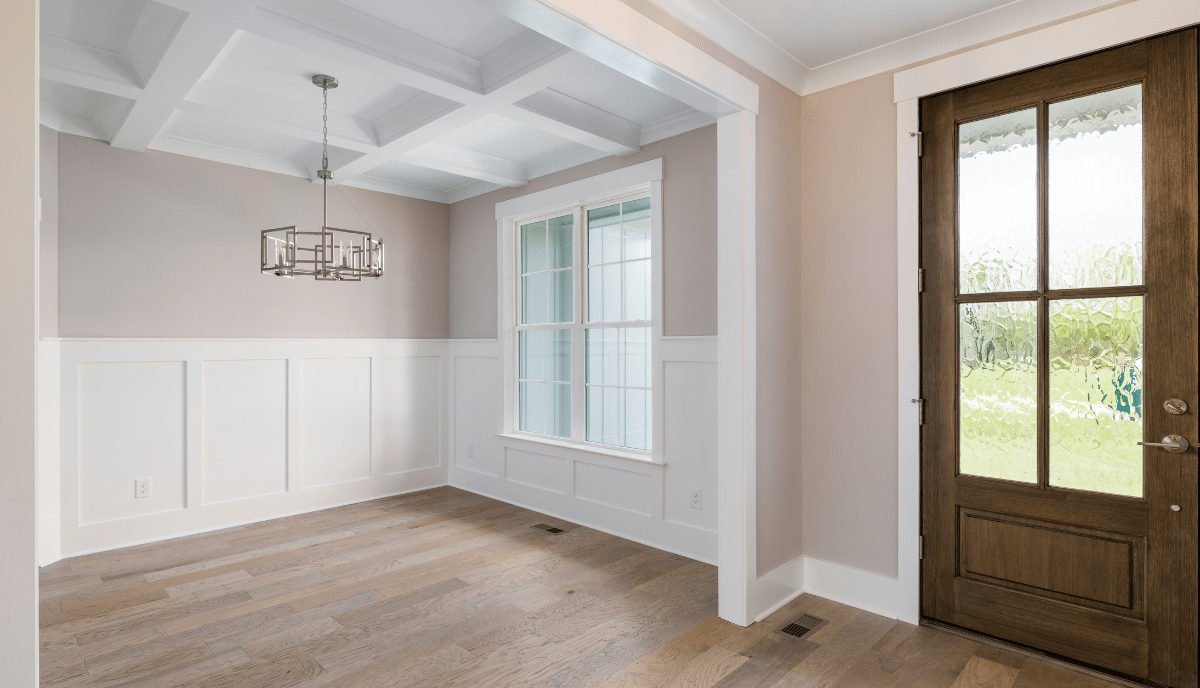Baseboards may not be the flashiest part of a room, but they’re essential for tying your space together. More than just a transition between your wall and floor, the right baseboard trim adds style, hides imperfections, and even protects your drywall. Whether you’re remodeling a historic home or designing a sleek modern condo, there’s a baseboard style that fits your aesthetic.
Here are 9 of the best baseboard trim design ideas to upgrade your home:
1. Classic Applied Colonial
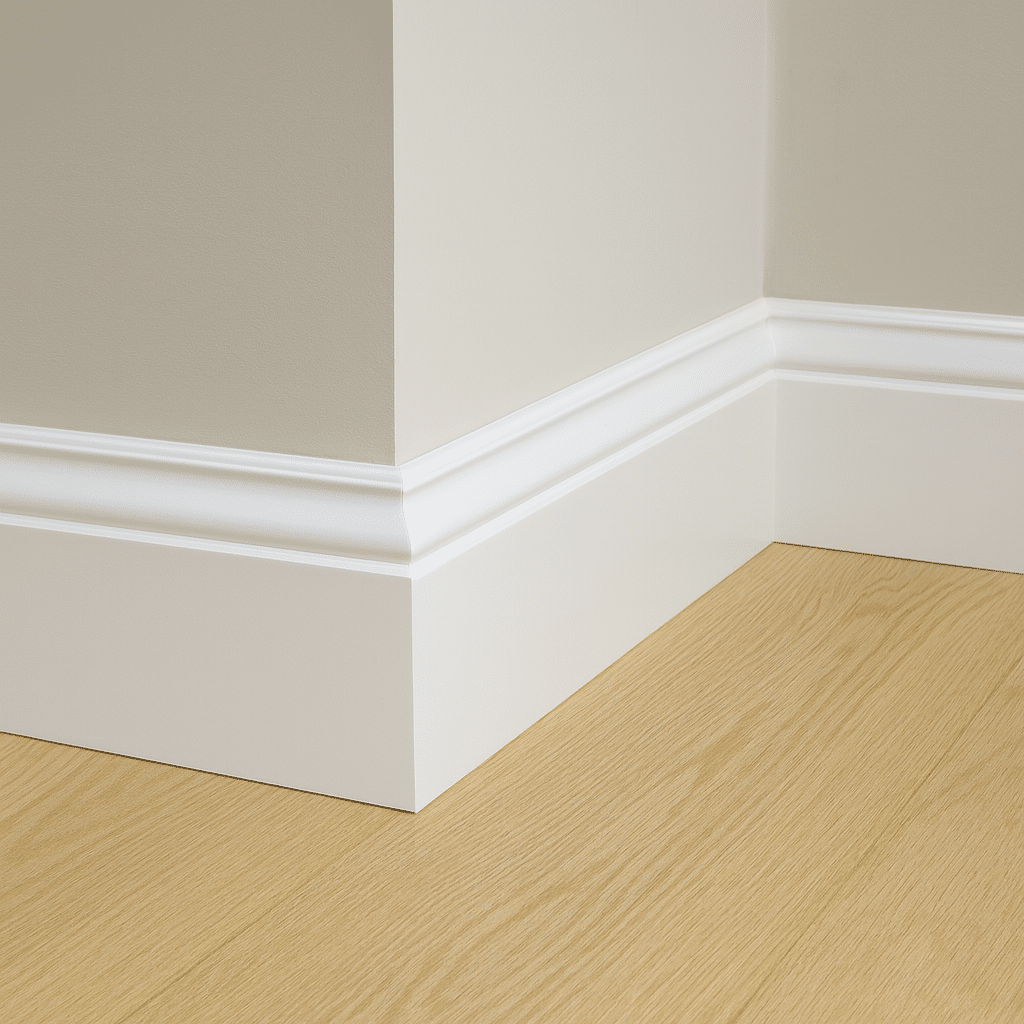
The Classic Applied Colonial baseboard is one of the most timeless and recognizable trim styles in home design. It typically features a proud-of-the-wall board with a curved ogee or beaded profile that adds subtle character without overwhelming the space. Its elegant detailing makes it feel right at home in traditional or transitional interiors, especially those with crown moldings or decorative window casings. It’s a versatile look that has stood the test of time across generations of home styles.
Homeowners love this style not just for its charm, but also for its practicality. It covers the joint where the wall meets the floor, often hiding small imperfections or gaps from settling or uneven flooring. Plus, its painted surface is easy to touch up over time, making it ideal for high-traffic areas. Whether you’re restoring a historic home or simply want a classic detail that elevates your interior, Applied Colonial baseboards deliver a polished, finished look that never goes out of style.
2. Aluminum Reveal
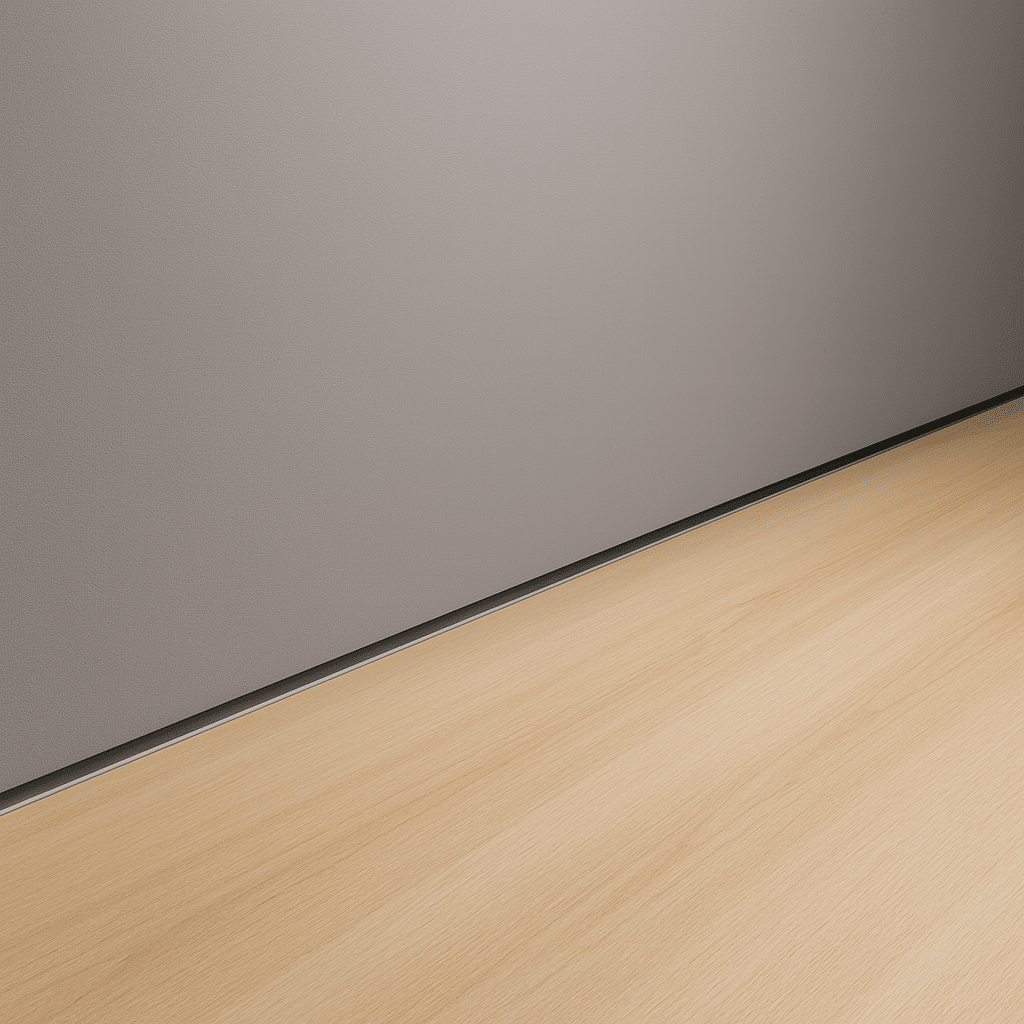
If you’re aiming for a sleek, high-design look, the Aluminum Reveal, or floating baseboard, offers a modern alternative to traditional trim. This style uses a slim anodized aluminum strip that creates a narrow gap between the drywall and the floor, making it look like the walls are floating. There’s no ledge, no bulky molding, just a clean shadow line that adds instant architectural edge.
This minimalist approach is ideal for modern builds, luxury condos, and gallery-style interiors where every detail is intentional. It’s also incredibly low-maintenance, since the lack of a ledge means there’s nowhere for dust or debris to collect. For homeowners who want their trim to disappear while still protecting the bottom of their walls, this design makes a bold, futuristic statement without ever shouting for attention.
3. Shiplap Wainscot Base
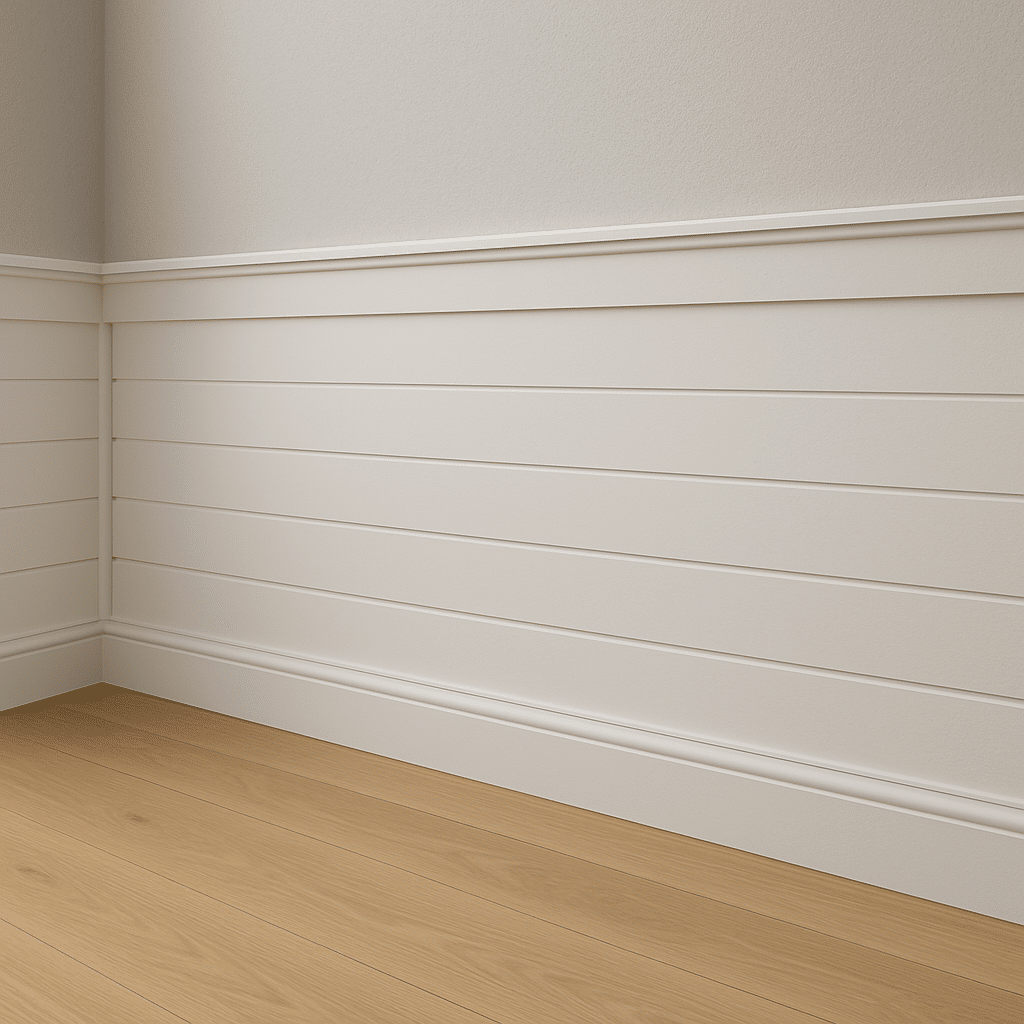
The Shiplap Wainscot Base is a clever design move that blurs the line between wall and trim. Instead of stopping at a traditional baseboard, horizontal shiplap panels run all the way down to the floor—acting as both wall treatment and baseboard in one seamless design. The result is a cohesive, textured look that feels intentional and adds rustic charm with a modern twist.
This style is especially loved in farmhouse-inspired homes, beach cottages, and high-traffic utility spaces like mudrooms and powder rooms. It offers the visual interest of shiplap with the durability of a protective baseboard. Plus, the continuous surface means fewer crevices for dirt or scuffs to hide, making it as practical as it is stylish. If you’re after a trim option that adds character and function
4. Modern Flush Baseboard

For those who prefer clean lines and a minimalist aesthetic, the Modern Flush Baseboard is a perfect fit. Unlike traditional baseboards that project from the wall, this style is installed level with the drywall, creating a completely flat transition between wall and floor. The result is a seamless, gallery-like appearance that puts the focus on the architecture and décor without any visual interruption.
This trim style is especially popular in contemporary condos, art-forward spaces, and high-end minimalist homes. It protects the bottom of the wall from wear and tear just like any baseboard, but does so without adding bulk or distraction. Whether you’re highlighting bold artwork, high-end flooring, or simply want a clutter-free look, flush baseboards help achieve that ultra-modern feel while still delivering practical performance.
5. Tall Stacked

If you’re looking to add instant drama and elegance to a room, the Tall Stacked Base + Cap is a go-to design choice. This style consists of a tall, plain baseboard—usually 6 to 10 inches high—paired with a separate cap molding or shoe trim to give it a more architectural presence. The layered look draws the eye upward, creating the illusion of higher ceilings and adding vertical dimension to any space.
It’s a favorite in formal living and dining rooms, especially those with lofty ceilings or historic charm. Homeowners love how this baseboard style feels grand and substantial without relying on intricate patterns. Whether painted in crisp white or matched to the wall color for a subtler look, the Tall Stacked Base + Cap transforms plain walls into statement features, bringing depth and a sense of craftsmanship to upscale interiors.
6. Square-Edge

For a modern, budget-conscious option that doesn’t sacrifice style, Square-Edge MDF baseboards are a top pick. These baseboards feature a flat, ¾-inch-thick profile with a dead-straight top and clean lines. Made from medium-density fiberboard (MDF), they come factory-primed and ready for paint, which makes them ideal for bold accent walls or vibrant color schemes. The simplicity of the design also means they blend well with nearly any interior style—from modern to transitional.
Homeowners love this trim for its durability and cost-effectiveness. MDF won’t split or warp like solid wood, making installation smoother and touch-ups easier over time. It’s especially popular in kids’ rooms, rentals, and other areas that see frequent repainting or wear and tear. When you want a crisp look on a practical budget, square-edge MDF delivers both function and flexibility.
7. Dark-Stained Solid Wood
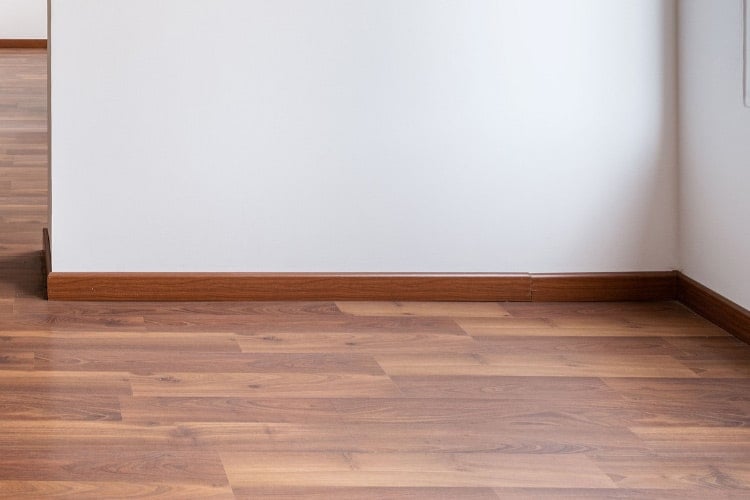
For a rich, sophisticated look, dark-stained solid wood baseboards are hard to beat. Made from natural hardwoods like walnut, mahogany, or oak, these baseboards are left unpainted and instead finished with a deep stain that highlights the natural grain. The result is a warm, furniture-like appearance that visually grounds the room and frames the floor with a sense of luxury.
Homeowners appreciate this style not just for its elegance, but also for its practicality—darker tones are far more forgiving when it comes to scuffs, dirt, or pet marks compared to white-painted trim. It pairs beautifully with homes that already feature stained wood doors, window casings, or cabinetry. In rooms with light-colored walls or warm-toned floors, dark-stained baseboards add contrast, depth, and a timeless sense of craftsmanship.
8. Craftsman Step Detail
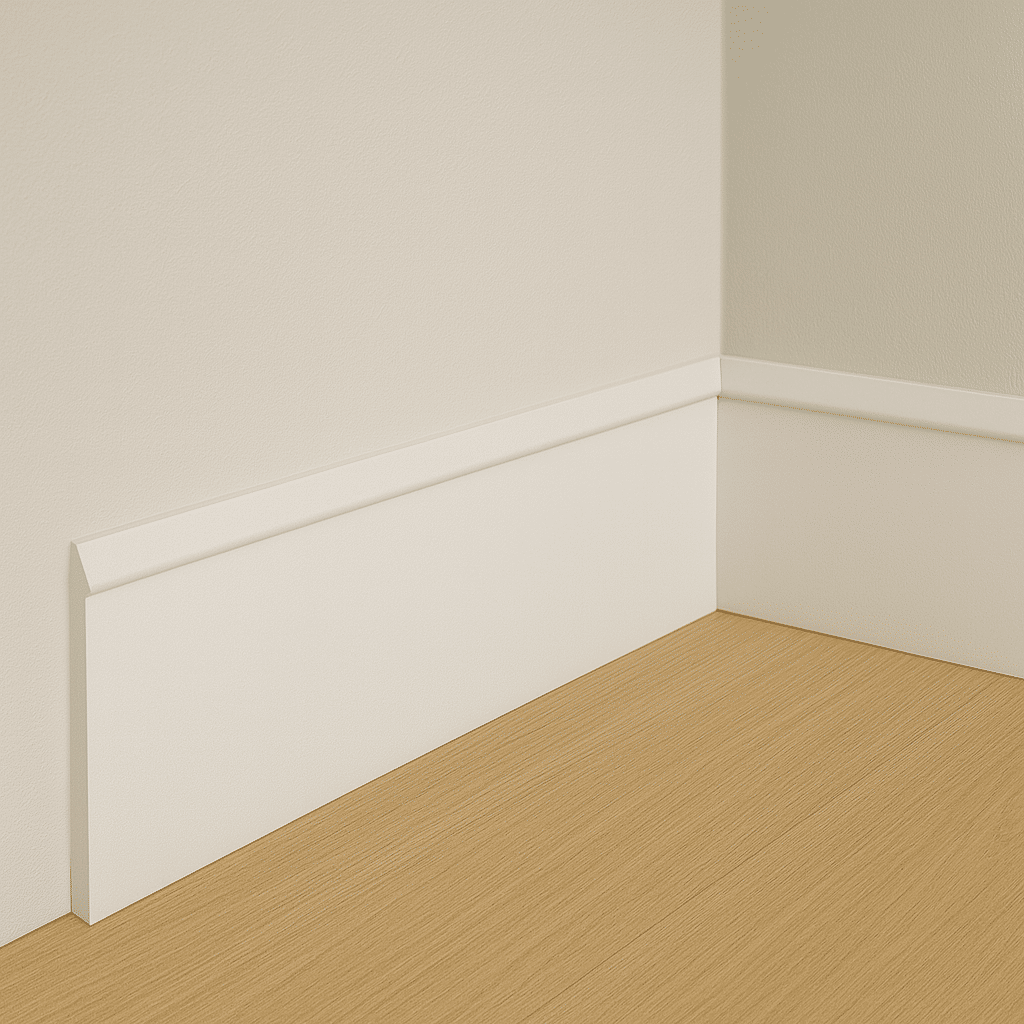
The Craftsman Step Detail baseboard is known for its simplicity, function, and subtle charm. It features a flat face with a small “step” or chamfered edge near the top, creating a clean profile with just enough depth to catch the eye. This style stays true to the Craftsman movement’s focus on honesty in materials and design—no excessive ornamentation, just purposeful detail. It pairs beautifully with Craftsman-style window and door casings, giving your trim work a cohesive and thoughtful appearance.
Homeowners are drawn to this style because it strikes a balance between handcrafted character and modern simplicity. It feels grounded and architectural without being fussy, making it a perfect choice for bungalows, modern farmhouses, and Arts-and-Crafts revivals. Whether stained or painted, the Craftsman Step Detail adds structure and warmth, especially in spaces that celebrate natural materials and craftsmanship.
9. Baseboard with LED Backlighting
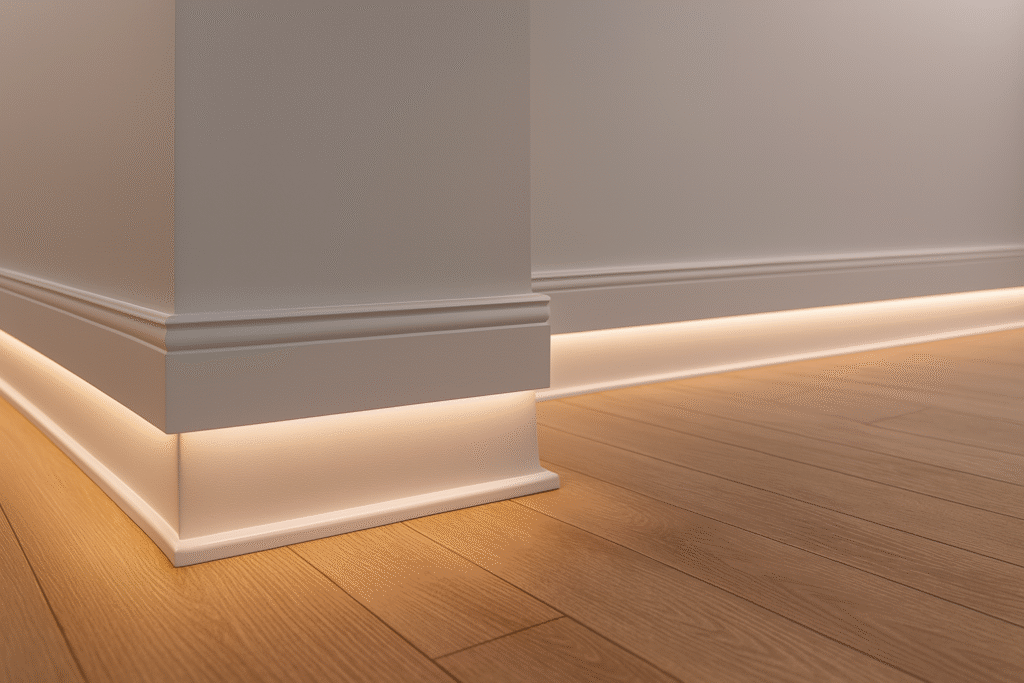
For a truly modern and multifunctional twist on baseboard trim, consider one with integrated LED backlighting. These baseboards look like standard trim at first glance, but tucked behind them is a hidden LED strip that casts a soft, dimmable glow. It’s an ambient light source that subtly washes the floor, highlighting textures and providing low-level illumination without the need for visible fixtures.
This style is a favorite in media rooms, smart-home renovations, and hallways where night lighting is both useful and stylish. It adds a high-end, tech-forward touch to any room, while also serving practical purposes like lighting a pathway or creating mood lighting. If you’re already upgrading your home with smart features, LED baseboards are a natural fit—blending beauty, functionality, and innovation in one seamless design.
Jamie is the Founder of My Home Dwelling. He is a homeowner and enjoys sharing his homeowner tips with others. He has real estate experience working as a new home construction Realtor. Jamie has worked on numerous residential construction sites helping with interior and exterior renovations. He loves refinishing furniture, DIY home projects, and sharing his knowledge online.

